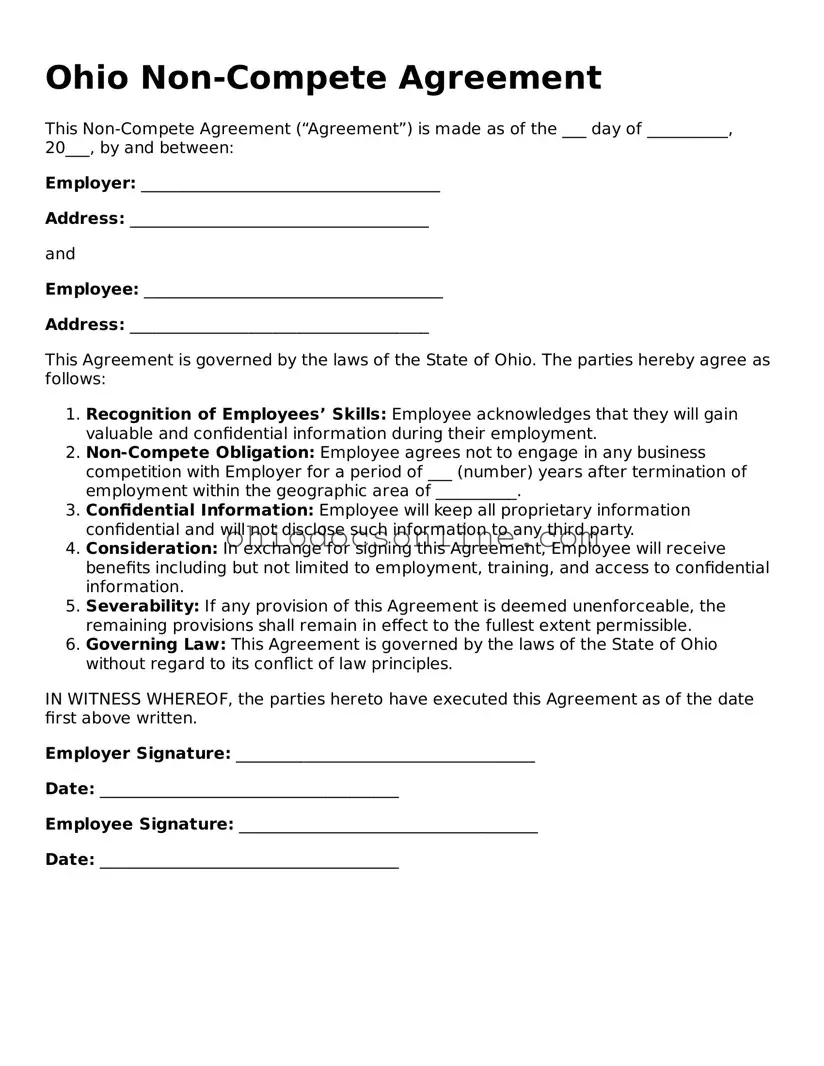Printable Non-compete Agreement Template for Ohio
A Non-compete Agreement form in Ohio is a legal document that restricts an employee's ability to work for competing businesses after leaving their current employer. This agreement aims to protect the employer's confidential information and competitive edge in the market. Understanding the nuances of this form is essential for both employers and employees to navigate their rights and obligations effectively.
Open Editor
